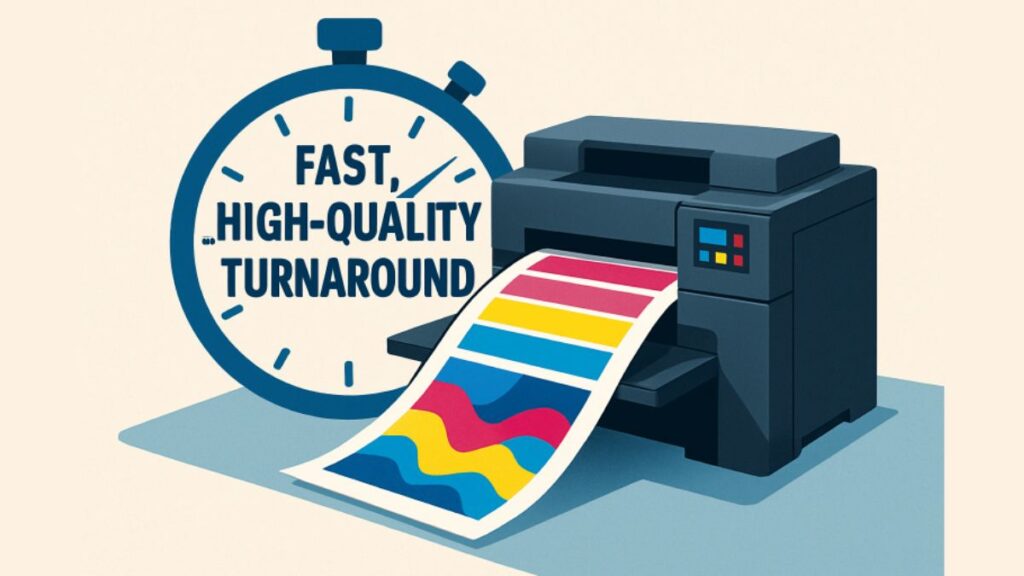As business moves at an ever-increasing pace, the print industry is being pushed to deliver more, faster than ever before. The need for efficiency and speed has spurred a technological revolution, transforming how companies approach urgent print jobs with outstanding quality. From automation and artificial intelligence to the rise of versatile digital platforms, innovation is meeting and exceeding client expectations. Whether you need marketing collateral or a printing magazine with quick turnaround, these modern advancements are empowering businesses like never before.
The evolution of printing is not simply about speed. It’s about versatility, collaboration, and sustainable practices that are woven into every quick-turnaround project. As technology redefines workflows, professional printers can serve diverse needs, handle complex files, and produce highly customized projects with accuracy and efficiency. These factors collectively ensure brands stay agile and competitive in today’s demanding environment.
From small businesses to large corporations, everyone benefits from decreased lead times, fewer errors, and improved communication throughout the process. Not only do clients enjoy rapid turnarounds, but they can also trust that technology-driven solutions won’t compromise quality. By embracing new tools and methods, the industry as a whole is achieving a balance once thought impossible—speed, customization, and sustainability.
As we explore how these breakthroughs are reshaping quick-turnaround printing, it’s clear this evolution is just the beginning of a broader digital transformation sweeping across the print sector.
Digital Printing: A Game Changer
Traditional offset printing required time-consuming plate setups and larger print runs to be cost-effective. The shift to digital printing has enabled the immediate initiation of print jobs from digital files, making it easier to fulfill urgent orders with minimal delay. This on-demand approach enables businesses to order shorter runs for marketing, special events, or testing campaigns without incurring financial strain.
Digital printing is also well-suited for mass customization, allowing unique design elements—such as personalized names, images, or codes—to be seamlessly embedded into each piece. This level of flexibility, once seemingly out of reach for smaller projects, is now a tangible reality, providing an advantage to companies seeking impactful and timely communications.
Automation and AI: Streamlining Workflows
Printing operations have been transformed by the introduction of automation, from prepress to finishing. Automated job queues, file checks, and proofing systems reduce repetitive tasks, allowing operators to focus on high-value work. Meanwhile, artificial intelligence is enabling machines to make predictive decisions, from detecting errors to scheduling routine maintenance.
AI-driven software can flag file issues before they reach the press and suggest optimizations for layout or color profiles, further reducing costly misprints and downtime. Together, automation and AI accelerate the journey from initial concept to physical product, maximizing throughput and reliability for every project.
Advancements in Ink and Material Compatibility
The diversity of materials available for quick-turnaround printing has surged, unlocking new possibilities for brands and designers. Advances in ink formulations, such as fast-drying and UV-curable inks, deliver crisp, vibrant results on an expanded range of substrates. Whether it’s flexible plastics, metal, synthetic paper, or textured finishes, technology is making it easier to meet the demands of modern applications.
This compatibility is especially crucial for industries like packaging, retail, and marketing, which require eye-catching visuals and unique structural designs. Today’s materials and inks not only enhance product appearance but also ensure durability and speed, keeping pace with urgent deadlines and delivery schedules.
Cloud-Based Collaboration Tools
Project timelines are dramatically compressed by cloud technology, which allows teams to collaborate globally in real-time. Designers, clients, and print teams can simultaneously review proofs, make annotations, and share revisions through secure online platforms. This instant connectivity removes geographic barriers and shortens the review and approval cycle.
These collaboration hubs trace every change, reducing confusion, eliminating redundant communication, and ensuring stakeholders remain on the same page from start to finish. The result is greater accountability and faster project progression, with fewer delays and fewer back-and-forth exchanges.
Sustainability in Quick-Turnaround Printing
As concerns for the environment grow, the print industry is making significant strides towards greener, more responsible practices. Digital workflows generate significantly less waste by eliminating unused plates, chemicals, and excess inventory. Additionally, advances in automation mean presses can run at peak efficiency with lower energy consumption.
Many print providers are steadily incorporating eco-friendly inks, recycled materials, and optimized processes to reduce their carbon footprint further. These initiatives not only answer consumer demand for sustainability but also, over time, lead to cost savings and improved corporate reputation.
Future Trends in Quick-Turnaround Printing
The future of fast-paced printing lies in deeper system integration. Expect the rise of the Internet of Things (IoT), where machines communicate performance insights and coordinate maintenance automatically. The continued evolution of machine learning will also enhance print quality, optimize resource utilization, and enable predictive adjustments in real-time.
Furthermore, researchers and printers alike are racing to develop biodegradable substrates and water-based inks that don’t compromise vibrancy or durability. As these solutions mature, they will further solidify the role of print—fast, versatile, and responsible—in the broader ecosystem of modern marketing and communication.
Technology is rapidly rewriting the rules of what’s possible in quick-turnaround printing. With digital solutions and intelligent systems at the forefront, businesses can move with unprecedented speed while upholding exceptional quality and embracing a more sustainable future.
Conclusion
The advancements shaping quick-turnaround printing are transforming it from a reactive process into a proactive, intelligent system. By embracing digital workflows, automation, cloud collaboration, and sustainable materials, the industry is establishing a new benchmark for speed, quality, and accountability. As technology continues to evolve, print providers who adapt early will gain a competitive edge—delivering not only faster results, but also smarter, greener, and more customized solutions tailored to every client’s needs.






